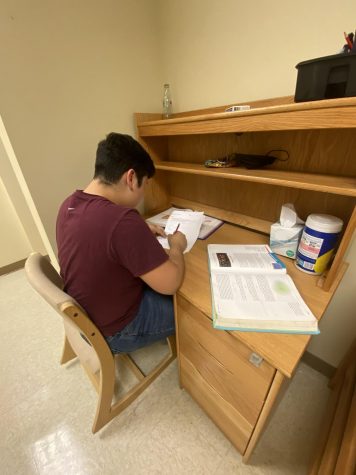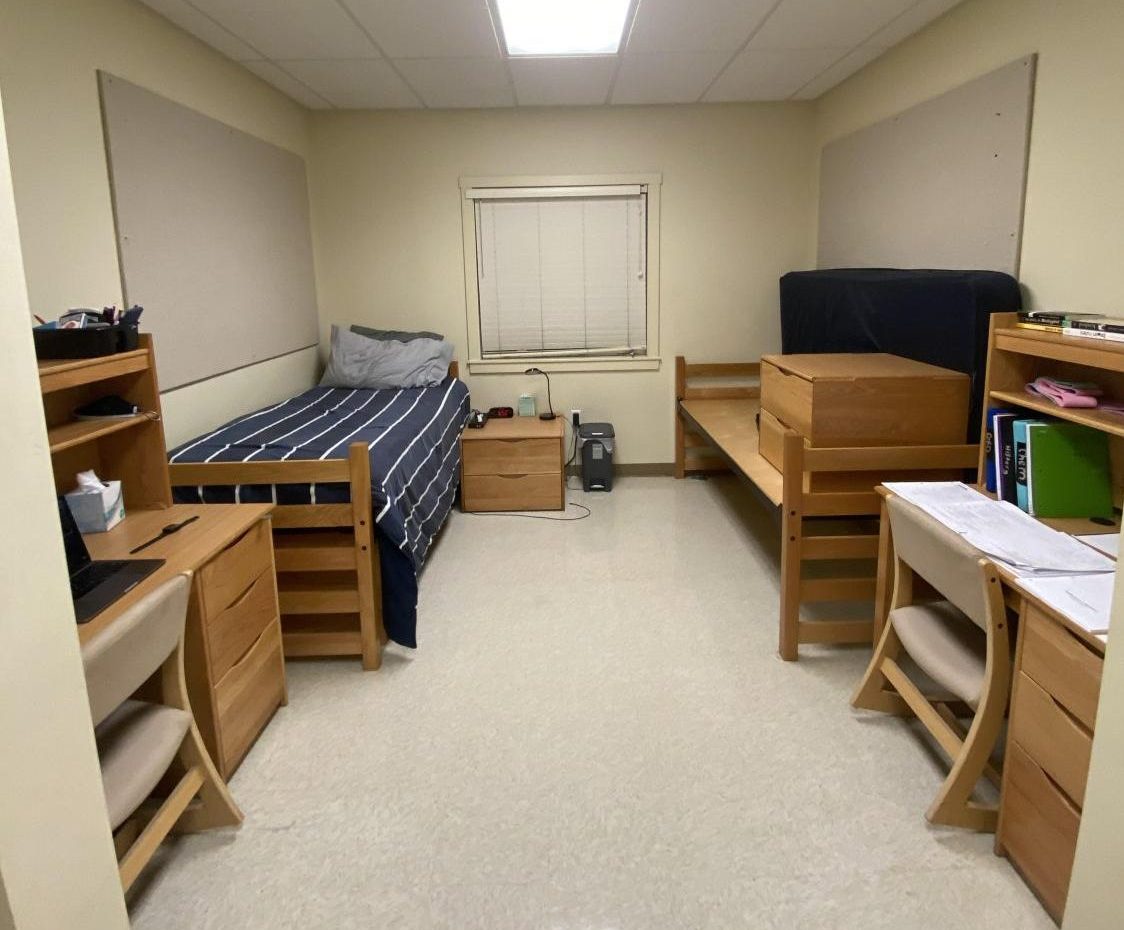Dorms Bring Students Back to School
March 5, 2021
Alexis Martinez was a freshman in the dorms when the Covid-19 pandemic broke out in March 2020. Before Eastside and many other schools across the country and the world shut down, the dorms were a very different place from what they are now.
Before Covid-19, students shared dorm rooms and ate together, worked together, and spent time together. Now, Alexis is a sophomore in the dorms during the pandemic. Now, the dorms are lonelier, inhabited by people who must wear masks just to walk by each other in the hallway.
“It feels weird since there aren’t really any people here, just some other girls,” said sophomore Dianna Macias, who also lived in the dorms last year. “It just feels really weird because I don’t hear the usual ‘back then dorms’ noise.”
The Eastside dorms are a place for students to come and focus on their studies, away from all the distractions of home, but when the quarantine began last year, the dorms immediately closed down and all dorm students had to go home.

From March until August last year, the dorm staff and Eastside sanitized the dorms, made plans, and made sure everything was Covid-proofed. The 2020-2021 school year came prepared with a dorm program that would help the students who have been struggling at home during the pandemic.
Students who want to join the dorms during quarantine need to know that students who are struggling with schoolwork will be prioritized over students who are doing fairly well. Students also need to have a legitimate reason as to why you want to join the dorms, since there cannot be too many people in the dorms at once.
“I think it’s very situational for some people who might not have the safest place at home or the best environment when it comes to studying,” Alexis said.
Residential Faculty Nathalie Hernandez explained that there has to be a clear need, in particular an academic need, to request to move to the dorms this year.
“If the student is not able to find academic support that they need at their home, they can make a request to their advisor,” Nathalie said. “There’s quarantine, testing, there’s mask-wearing, social distancing, they can’t go home on the weekends, unfortunately, and that’s a big drawback that people are not appeased by.”
Obviously, life in the dorms is different from before. There are a lot fewer people, a whole different schedule, and way more quarantines. After arriving, students are tested for Covid-19, given their own single rooms, and quarantined. After 10 days, students are allowed to socialize with other people in the dorms. In other ways, everything is relatively the same as it used to be, but now students get some more personal freedoms like bringing their own laptops, televisions, gaming consoles, and keeping their phones.
Once a month, everyone is tested for Covid and if anyone tests positive, the dorms enter a 10-day quarantine. The CDC defines a quarantine as the separation and restriction of the movement of people who were exposed to a contagious disease to see if they become sick. These people may have been exposed to a disease and do not know it, or they may have the disease but do not show symptoms.
During a quarantine, students are not allowed to leave the dorms or socialize with other people, and masks must be worn at all times when outside of the dorm rooms. Quarantine and Covid-19 rules in general are taken very seriously in the dorms, and if students are caught breaking them, their quarantine will be prolonged.
“We’ve already had to quarantine three times already, we have to quarantine every time we leave campus and come back or whenever a positive happens,” said sophomore Emily Torres. “For quarantine, we’re just supposed to stay in our rooms pretty much the whole day. If we need to go out to the kitchen or to the bathroom or whatever we have to wear masks and we’re not supposed to really talk to anybody else in person.”
The Eastside dorms are not the same as they used to be, but then again, nothing is. The dorms adapted to the adversity of a global pandemic, and are up and running for students that need them.
“Coming here is not just to slack off,” Alexis said. “We have our friends, that’s one of the perks of being here, but we’re here to do work and I think that’s something that you have to tell people that are willing to come.”
